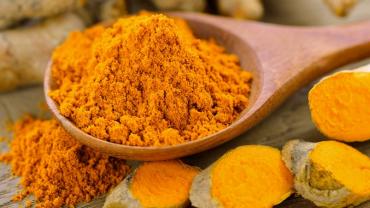Guest Blog by Designs For Health
There are only a few natural products that have demonstrated such a wide range of protective properties as curcumin. Turmeric has three main bioactive components, namely curcumin, desmethoxycurcumin and bisdemethoxycurcumin. These curcuminoids have many biological effects including anti-inflammatory, antioxidant, antitumor, antibacterial, and antiviral properties.
According to a study published in Complementary Therapies in Medicine, Researchers demonstrated that curcuminoid supplementation can reduce lipoprotein(a) and increase HDL-C, which may reduce the risk of a cardiovascular event in these patients.
This study included a total of 82 patients with type II diabetes, 18 to 65 years of age. Each patient took either 1000 mg of standardized curcumin or a placebo for 12 weeks. Baseline lab testing included serum triglycerides, total cholesterol, HDL-C, non-HDL-C, and lipoprotein(a). At the end of the 12 weeks there was a significant reduction of serum lipoprotein(a) and an increase in HDL-C concentrations only seen in the curcuminoid group. There were no significant changes in total cholesterol, LDL-C, and triglycerides in either group.
This is an interesting study since the ability to influence liporotein(a) is very limited. Niacin is one of the only natural agents that can significantly reduce liporotein(a); however, it is not effective for everyone.
Health care providers have many tools today to assess cardiovascular health and support the body’s physiology, and it is essential to perform a thorough assessment of these patients. This may include looking at lipid fractionation profiles, chronic inflammatory markers (ferritin, hs-CRP, fibrinogen), nutrient markers (magnesium, potassium, selenium, copper, folate, B12, B6, zinc, and calcium), fat soluble nutrients (vitamins A, D, E & K, and CoQ10), oxidative stress factors (homocysteine, insulin, and lipid peroxidases), heavy metals, and fatty acid profiles. A successful treatment approach should include investigation into these various factors.

